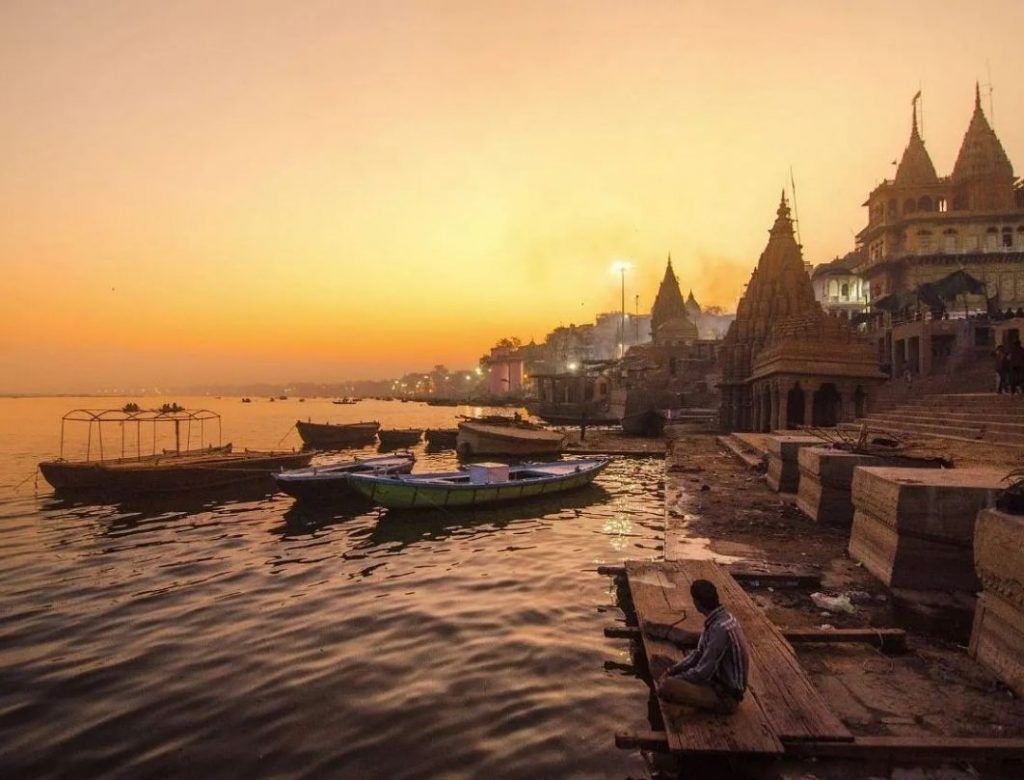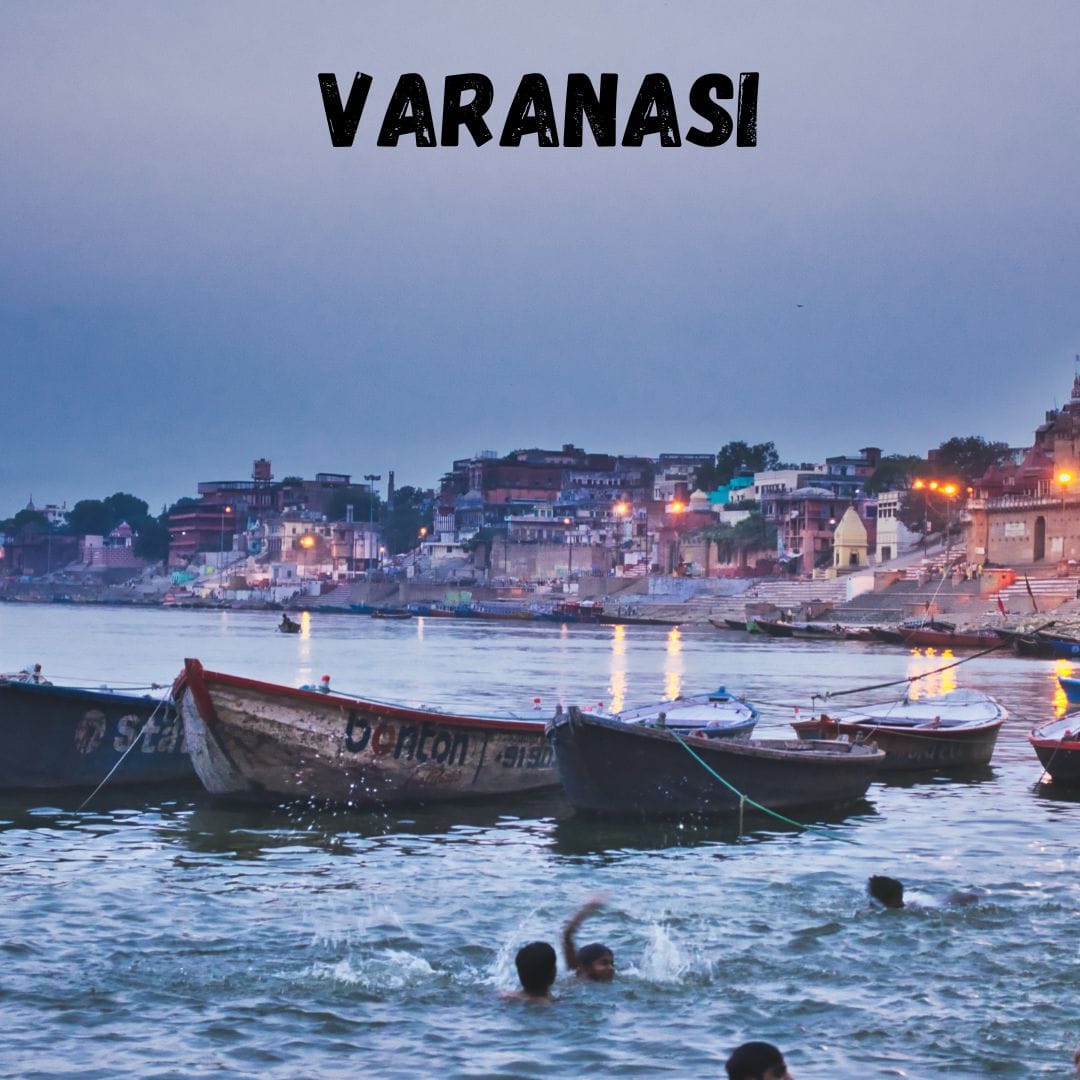Varanasi Ghats Tour

Varanasi Ghats Tour
Varanasi, also known as Kashi or Banaras, is the spiritual heart of India. With its labyrinthine alleys, echoing temple bells, and divine chants, this ancient city sits serenely on the banks of the holy river Ganga. But what truly defines Varanasi are its legendary ghats — the stone steps that lead down to the river. These ghats are not just architectural marvels but sacred spaces where life, death, devotion, and celebration coexist.
Embark on a mesmerizing Varanasi Ghats Tour with us and discover why the ghats of the Ganges are the soul of the world’s oldest living city.
What Are Ghats in Varanasi?
Ghats are stepped embankments built along rivers, especially the Ganges, where rituals, ceremonies, and daily life unfold. In Varanasi, there are over 80 ghats, each with its own story, religious significance, and atmosphere.
Some are dedicated to prayers and spiritual bathing, others to cremations, and a few to cultural performances. Each ghat whispers ancient tales of gods, sages, and pilgrims.
Top Ghats to Visit in Varanasi
1. Dashashwamedh Ghat – The Grand Stage of Spirituality
The most vibrant and iconic of all, Dashashwamedh Ghat is believed to be the spot where Lord Brahma performed ten horse sacrifices. It’s the epicenter of the city’s religious life.
- Highlight: The Ganga Aarti every evening at sunset is a must-see — a visual symphony of lights, chants, conch shells, and devotion.
- Tip: Arrive by 5:30 PM to get a good spot, or book a boat seat for an enchanting riverside view.
2. Manikarnika Ghat – The Eternal Flame of Liberation
Manikarnika Ghat is one of the two main cremation ghats in Varanasi. According to Hindu belief, those cremated here attain moksha (liberation from rebirth).
Significance: The fires of cremation here have been burning continuously for centuries.
- Note: It’s a deeply spiritual site, not a tourist attraction. Respect the solemnity and avoid taking photographs.
3. Assi Ghat – Where Pilgrims Begin Their Day
Located at the southern edge of Varanasi, Assi Ghat is popular among students, artists, and spiritual seekers.
- Activities: Early morning yoga sessions, sunrise boat rides, and musical performances.
- Special Touch: The ghat comes alive during Dev Deepawali and Ganga Mahotsav.
4. Scindia Ghat – Myth & Mystique
This ghat features partially submerged temples, said to have sunk due to structural failure. It’s quiet, mysterious, and offers surreal views.
Don’t Miss: The Shinde Raja Temple, half-submerged and hauntingly beautiful during dawn or dusk.
5. Tulsi Ghat – A Seat of Cultural Legacy
Named after Goswami Tulsidas, the poet-saint who wrote the Ramcharitmanas, Tulsi Ghat is a cultural and spiritual hub.
Highlights: The ghat hosts Ramlila performances, devotional music, and Ayurvedic therapies.
6. Panchganga Ghat – Where Five Rivers Merge Spiritually
Said to be the spiritual confluence of five holy rivers (Ganga, Yamuna, Saraswati, Kirana, and Dhutpapa), this ghat is sacred for students and seekers.
- Attraction: The Alamgir Mosque, built by Aurangzeb, adds a unique Indo-Islamic touch to this sacred site.
Best Way to Explore the Ghats
Boat Ride on the Ganges
A sunrise or sunset boat ride is the best way to witness the magic of the ghats. As the mist lifts, the city slowly awakens with chants, temple bells, and bathers performing rituals.
- Morning Tour: Ideal for capturing the golden glow of the sun and peaceful scenes.
- Evening Tour: Perfect for witnessing the Ganga Aarti and the shimmering lamps floating on the river.
You can opt for private boats, shared rides, or luxury cruises depending on your budget
Walking Tour Along the Ghats
A walking tour lets you explore the narrow lanes, meet the locals, visit hidden temples, and understand the significance of each ghat more intimately.
- Join a guided heritage walk for deeper insights into rituals, legends, and the living traditions of Kashi.
Festivals & Rituals at the Ghats
- Dev Deepawali: Ghats are lit with millions of diyas, transforming the riverbank into a divine spectacle.
- Makar Sankranti & Kartik Purnima: Thousands take holy dips in the Ganges.
- Ganga Dussehra: Celebrates the descent of the Ganges from heaven to earth.
These festivals are perfect times to witness the vibrant, spiritual heart of Varanasi in full bloom.
Dos & Don’ts at Varanasi Ghats
Dos:
- Dress modestly and respectfully.
- Remove shoes when entering temples or stepping on sacred platforms.
- Be polite and open-minded during ceremonies.
- Hire a licensed guide for authentic information.
Don’ts:
- Avoid clicking pictures at cremation ghats.
- Don’t litter — the ghats are sacred.
- Refrain from engaging with touts or fake priests.
Spiritual Significance of the Ghats
For Hindus, the Ganges is not just a river — it is Maa Ganga, the divine mother. Taking a dip in her waters is believed to cleanse one of sins. The ghats are gateways to moksha, where life’s journey culminates in spiritual freedom.
The constant flow of rituals — from birth ceremonies to last rites — reflects the cyclical nature of life, deeply rooted in Hindu belief.
Final Thoughts: A Journey Beyond Time
A tour of the Varanasi ghats is more than a sightseeing trip. It’s a soul-stirring experience, where every step echoes with chants, and every breeze carries centuries of devotion. Whether you seek spiritual solace, cultural immersion, or just an unforgettable journey, the ghats of Kashi welcome you with open arms.
Come walk the sacred steps of time — and feel the divine in every ripple of the Ganges.
Would you like help booking a Varanasi Ghat boat tour or designing a customized pilgrimage itinerary? I’d be happy to assist you!




